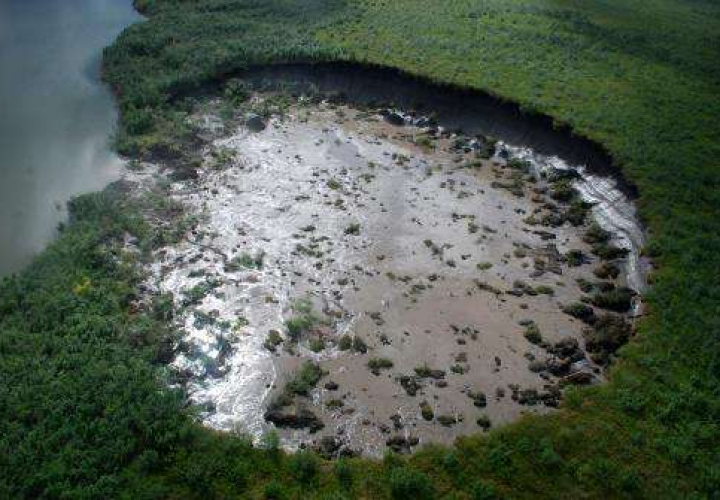
Climate Change Impacts on Southeast Asia's Urban Infrastructure
Ever think about the gritty realities of Southeast Asia's cityscapes? Picture this: roads not just cracking but giving way, drainage systems that can't handle a good downpour. These sights aren't merely annoying—they're big, flashing signs of an approaching storm.
Sea levels don't just creep up; they relentlessly climb, bringing with them more punishing storms than we've ever faced before. Forget guesses and forecasts—this is what folks are living through right now in these parts.
Take the Mekong Delta for example. Rising saltwater isn't some distant threat—it's lapping at our doorsteps, endangering essential crops and wreaking havoc on buildings and pavements alike. The very earth is rebelling against us; it's shifting beneath our feet into something unrecognizable—not exactly friendly to those trusty old designs we rely on every day.
And if you thought that was bad enough, let me tell you about heat stress—the silent enemy lurking around high-rise corners. Those concrete jungles scattered across Southeast Asia morph into ovens when night falls—and guess what? The oven stays hot even after dark! We're talking serious risks here for everyone sweating it out—especially those without a cool place to escape to.
Shorelines are disappearing faster than ever, wiping out the bustling beach scenes we used to know. Think about it—have you strolled along a coastal stretch and watched your sandy prints get swallowed by the tide? Well, imagine that happening to entire cities at a staggering speed.
Now let's talk bricks and mortar—or should I say roads and bridges? It goes way beyond slapping down some asphalt. We've got to think ahead because Mother Nature's rule book is getting rewritten as we speak. Our built world needs an upgrade if it wants any chance of keeping up with climate change's merciless march.
Adaptation Plans for Coastal Cities Facing Climate Change
Adapting to the rising tides isn't just paperwork for coastal cities in Southeast Asia—it's their lifeline. These strategies need to stay one step ahead of the ever-changing climate they face head-on. Take a look at Singapore; by using polder and dyke systems, it stands its ground against sea-level rise. But hey, what about all those other towns without these high-tech defenses?
Urban layouts have got to evolve—stagnation is no longer an option. Imagine this: What if tomorrow's cityscape was shaped by today's water shortages? Down in Cebu, they're getting creative with rainwater capture tech—they're turning dry spells into chances for growth.
Ever thought how desperation can fuel creativity? That's exactly what happens when communities are pushed to adapt!
And adaptation doesn't stop there—we've got to tap into Mother Nature, too! In Vietnam, mangrove reforestation does double duty: it boosts nature diversity while also acting like shield-wielding heroes against vicious storm surges.
Building defenses against floods is key. Urban areas are revamping waterways and piecing together ingenious tunnels that have two jobs: ferrying cars when it's bright out, and diverting rainwater during storms. Isn't the mark of a tough city its ability to roll with the rhythms of nature, not resist them? Moving folks away is our plan B but still on the table. Neighborhoods are being shifted upland, as officials strive to keep their unique spirit alive. Ever wonder how you can hang onto a town's heart when it has to pick up stakes?
Building Infrastructure Resilience in Southeast Asia
Reimagining cities from scratch is what it takes to bolster infrastructure resilience across Southeast Asia. We're not just talking about crafting systems that hold firm; we need them to adapt seamlessly to a whole spectrum of climatic twists and turns. Tossing 'smart' tech into the urban mix seriously ups the ante—imagine sensors keeping an eye on surging tides, or AI smoothly rerouting traffic when disaster strikes.
But resilient infrastructure? That's more than fancy gadgets—it hinges on variety and fail-safes. Picture this: you wouldn't risk all your bets on one horse, right? A city decked out with varied power grids, water sources, and transit options stands a better chance in taking nature's punches head-on. Remember how frustrating that last blackout was amidst a stormy fury? Now think—if only there had been another lifeline still kicking.
And here's where things start looking up—literally! Building skyward rather than outward shapes our future metropolises differently. Cities like Manila and Kuala Lumpur are now punctuated by skyscrapers built tough enough for typhoon season—not just as pretty additions but as steel-clad guardians against tempestuous skies above us.
Resilience goes beyond just towering edifices. It's hidden in the little things, too—think of porous sidewalks that ward off floods or city green spaces breathing life into our urban jungles and offering sanctuary when temperatures soar. Ever think about how a plain old park might save lives when the mercury rises? Seeing resilience as an investment is key—not merely an expense. We're laying down tracks for tomorrow's metropolises and shaping what we’ll hand over to those who follow us. What happens if we don't step up now? How do you even put a price on neglecting our future well-being?





